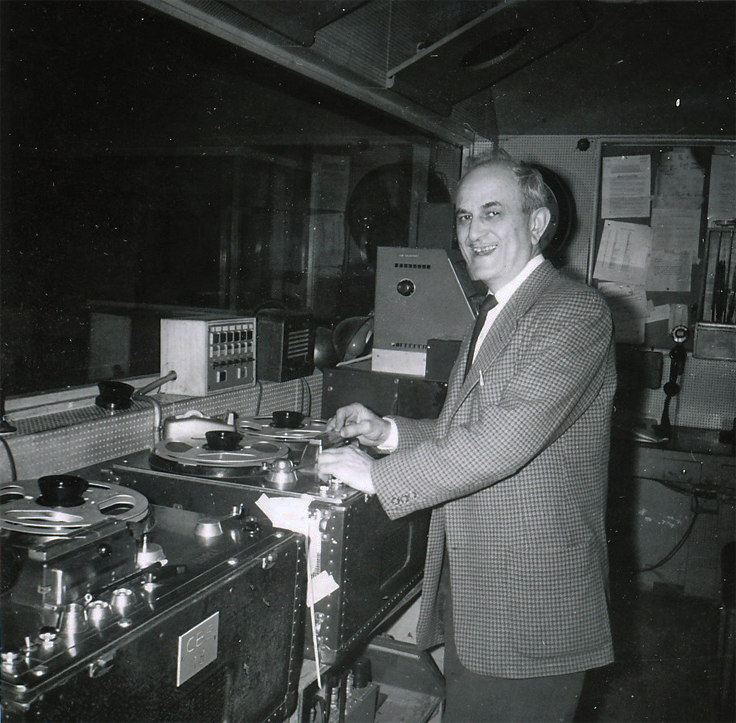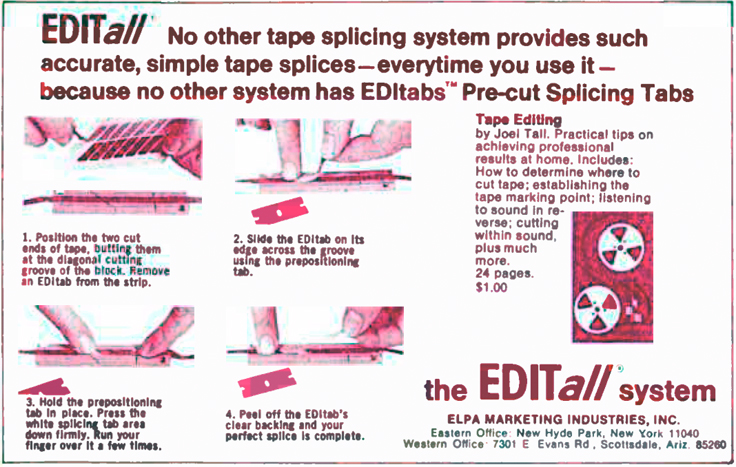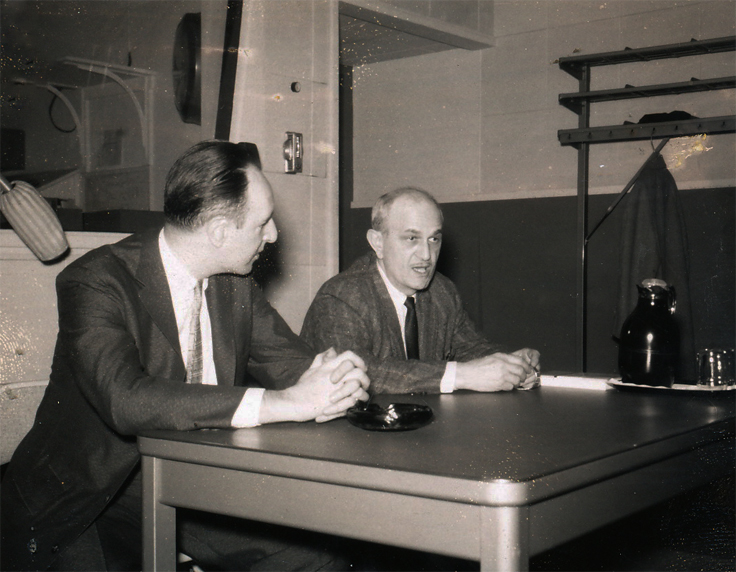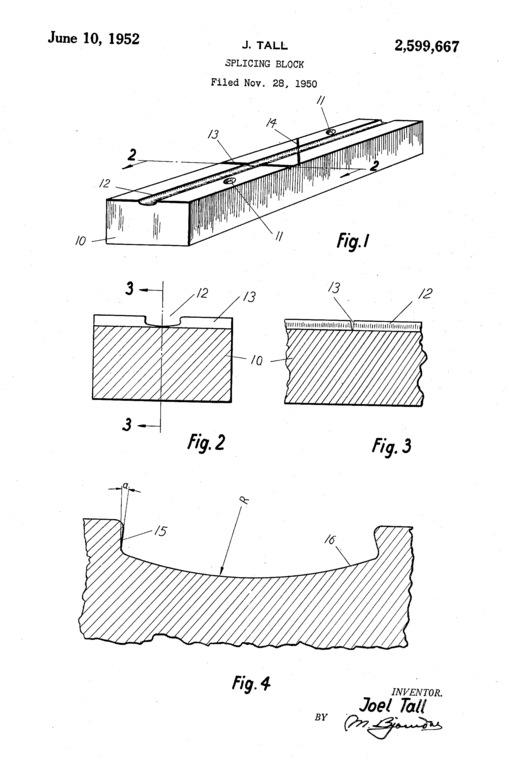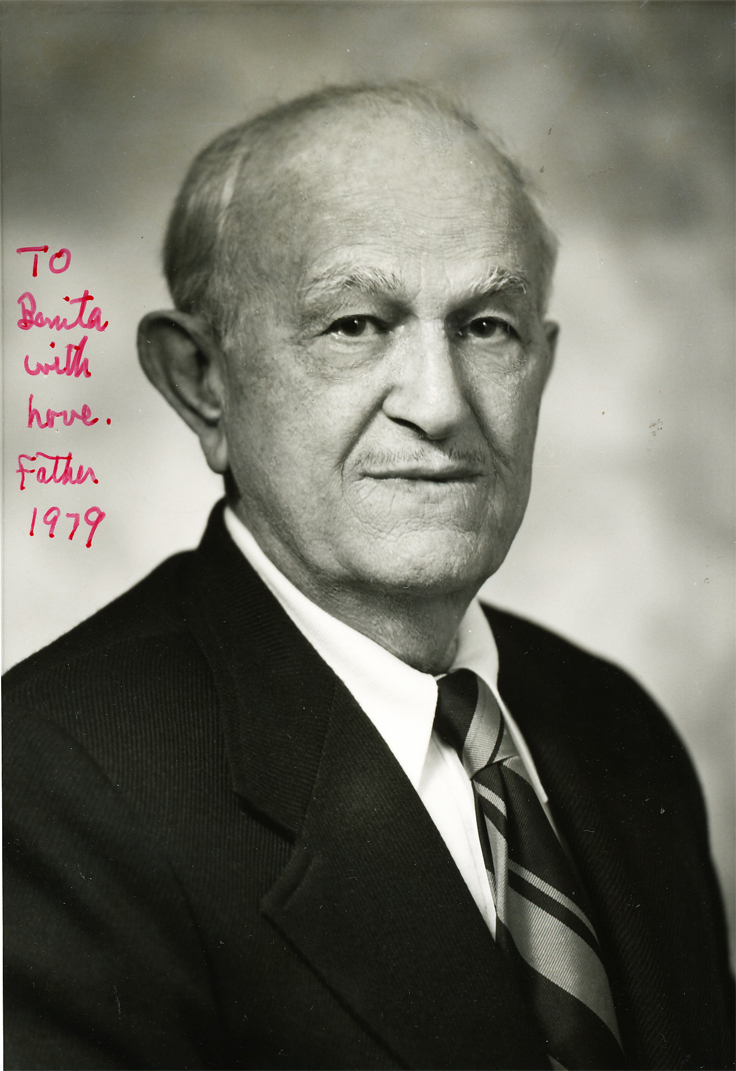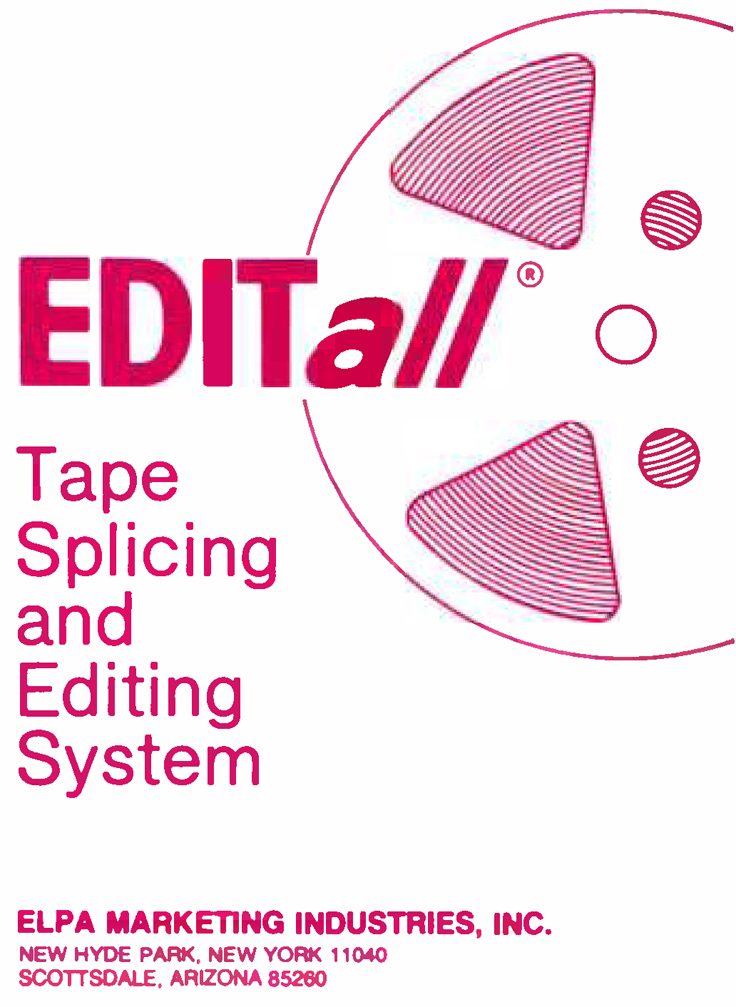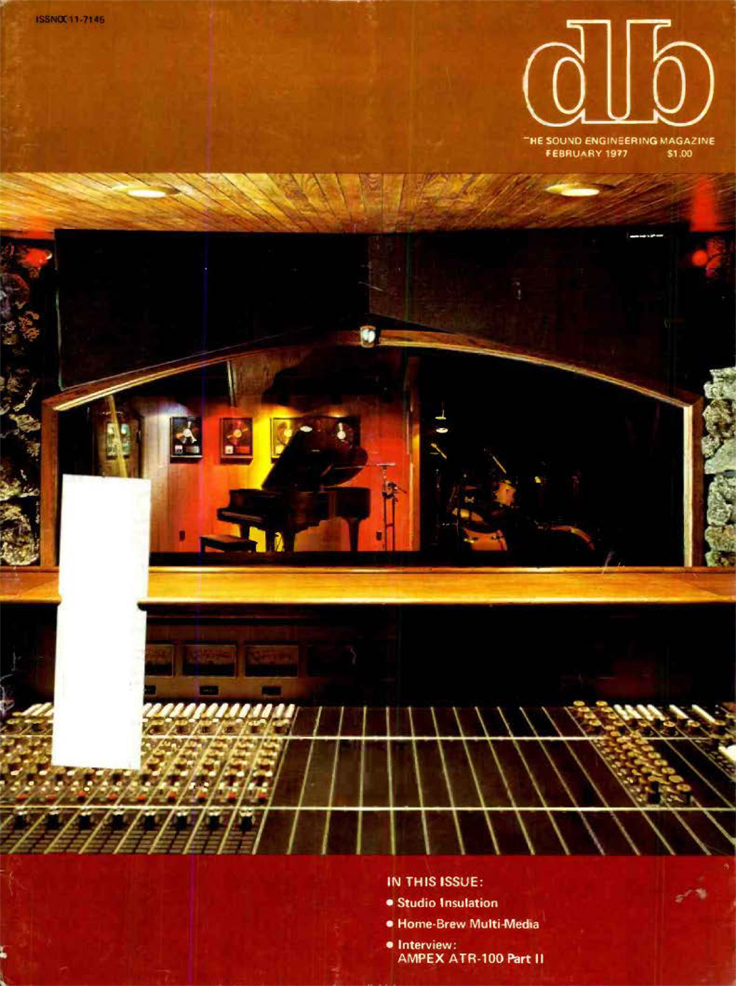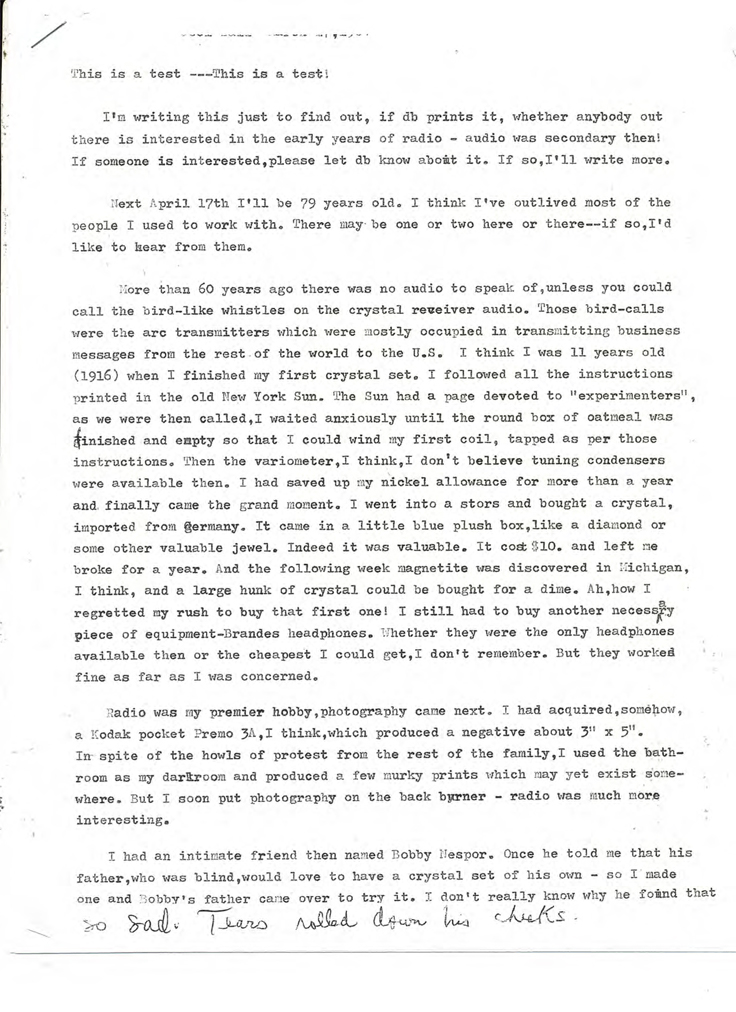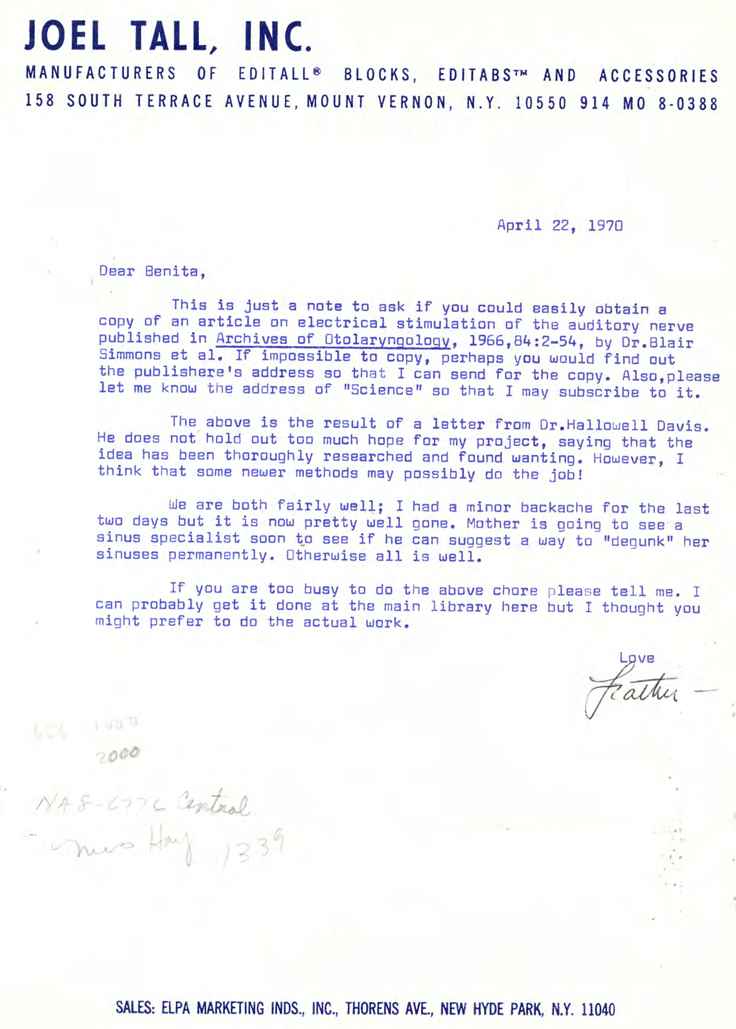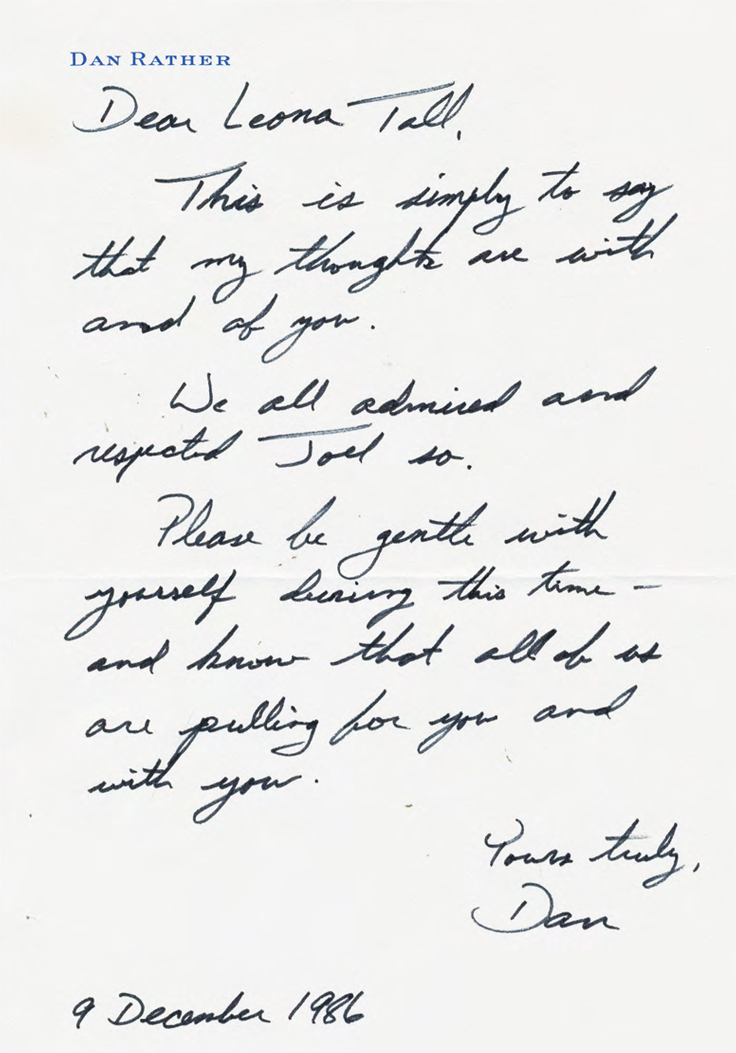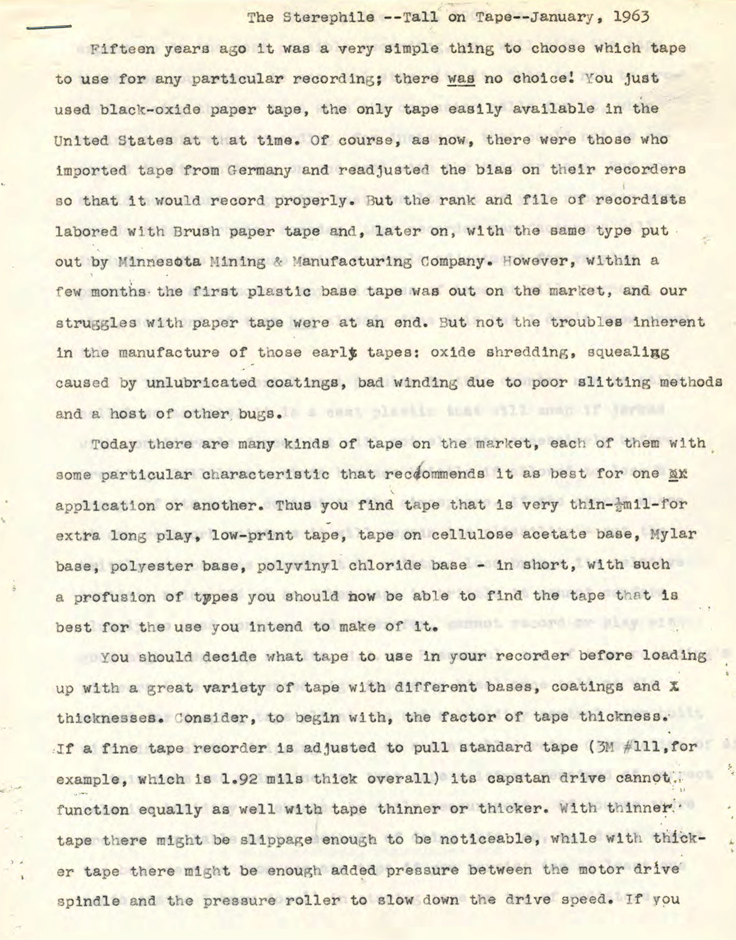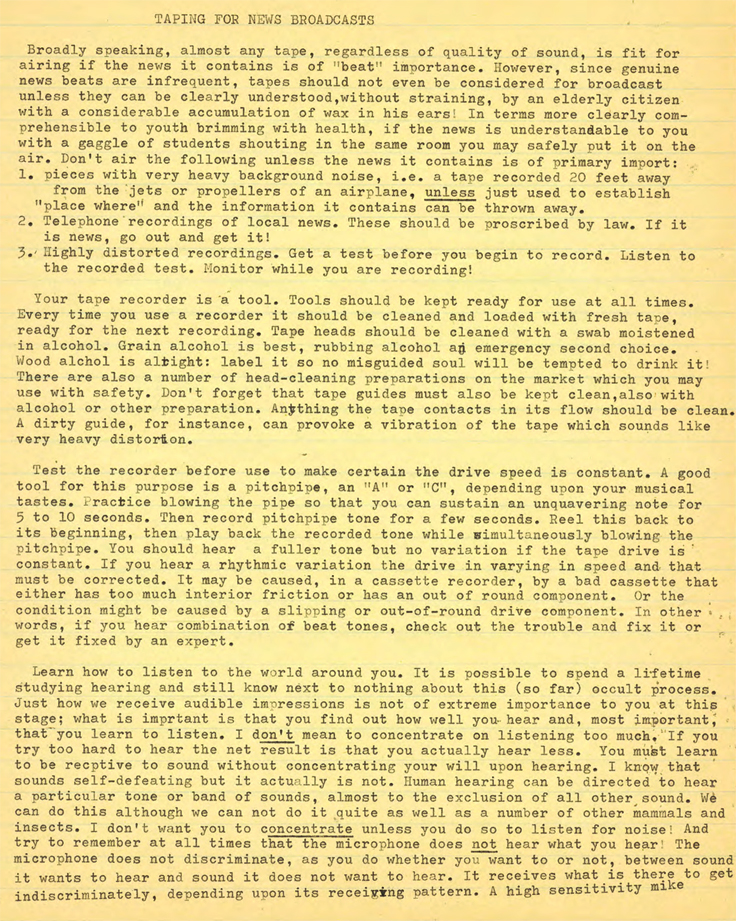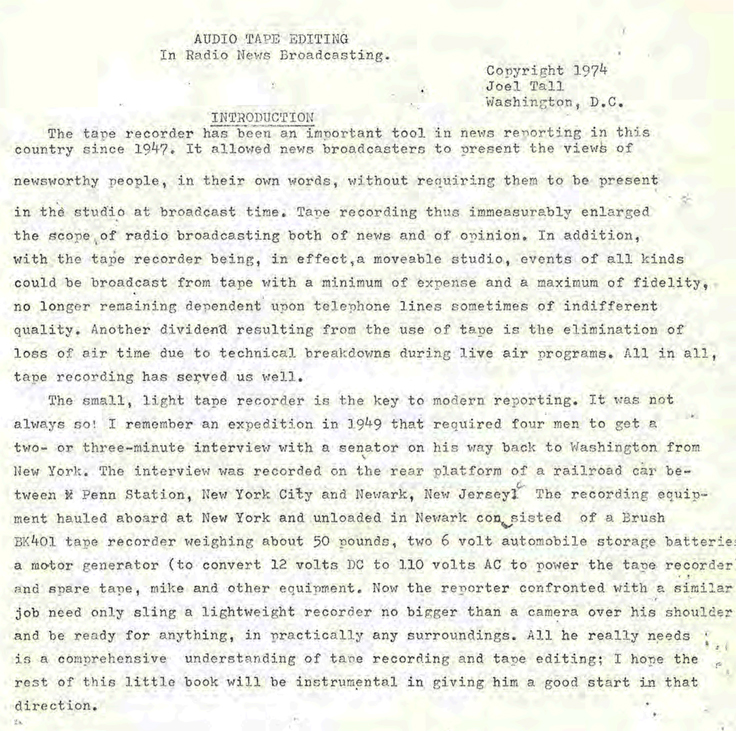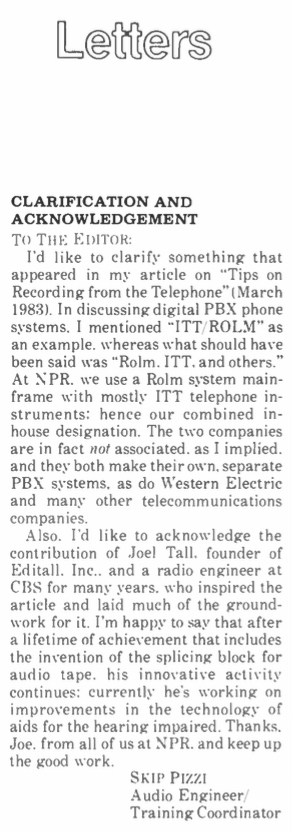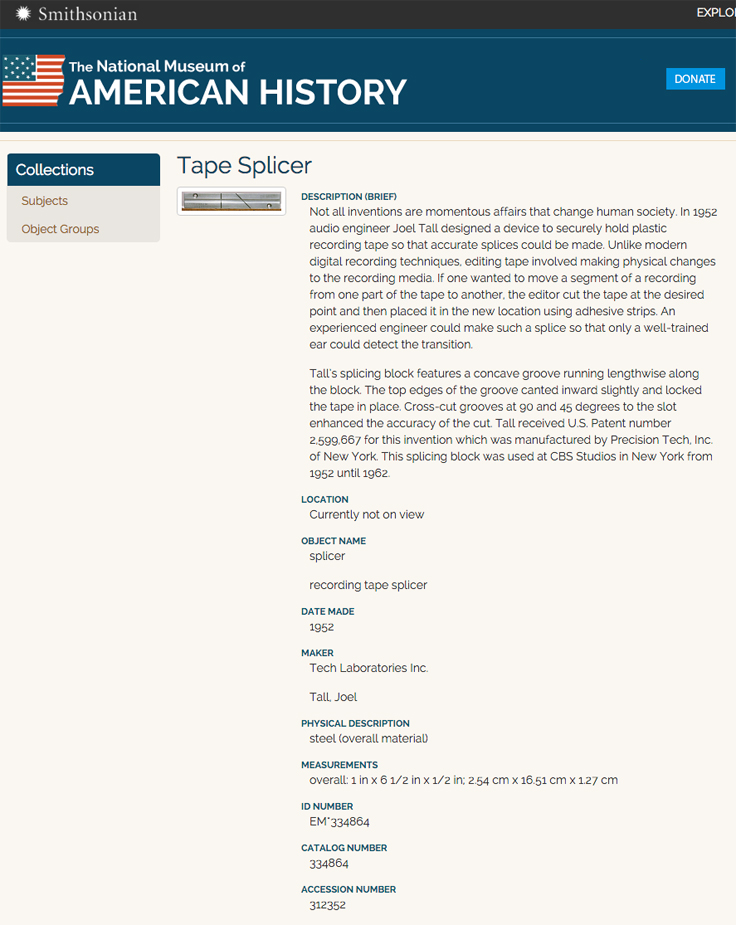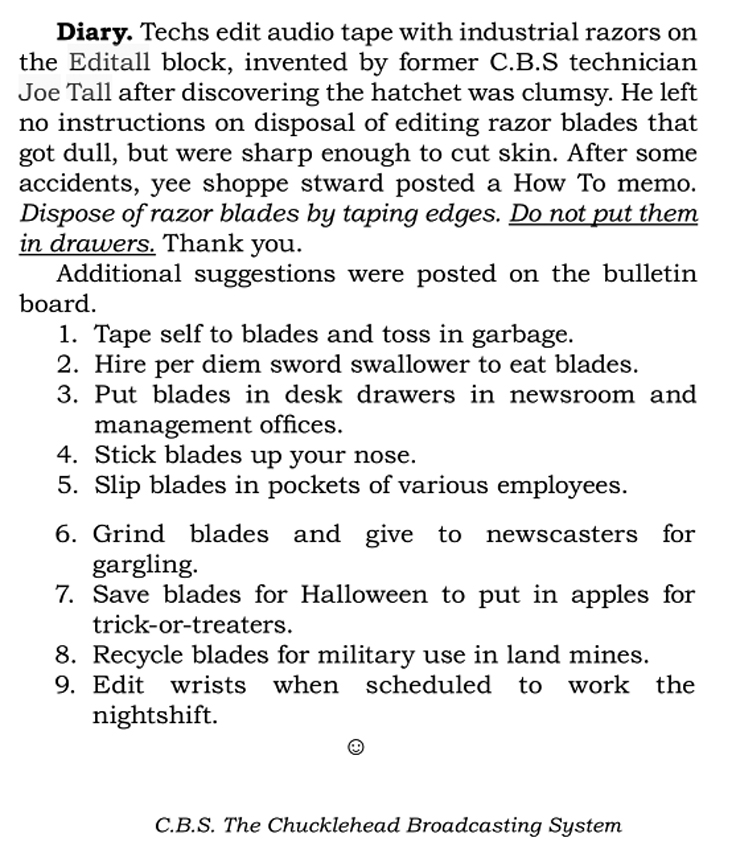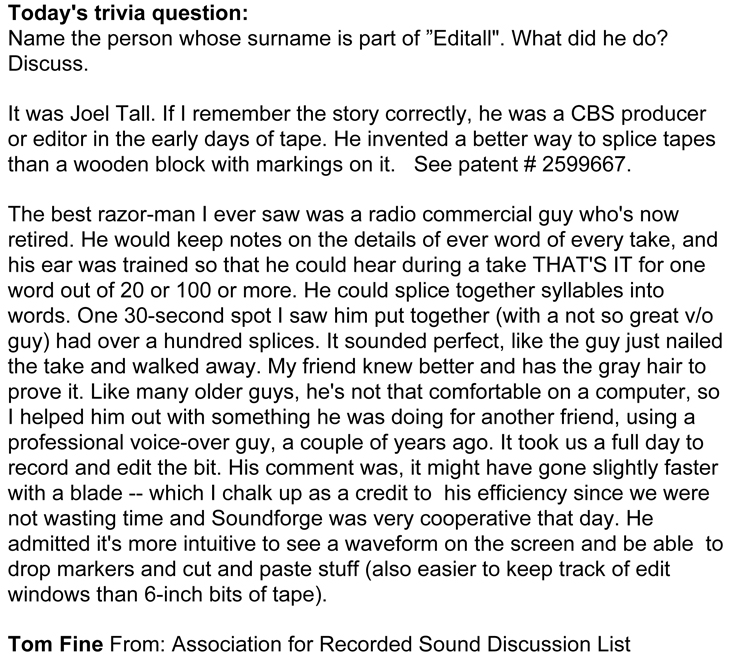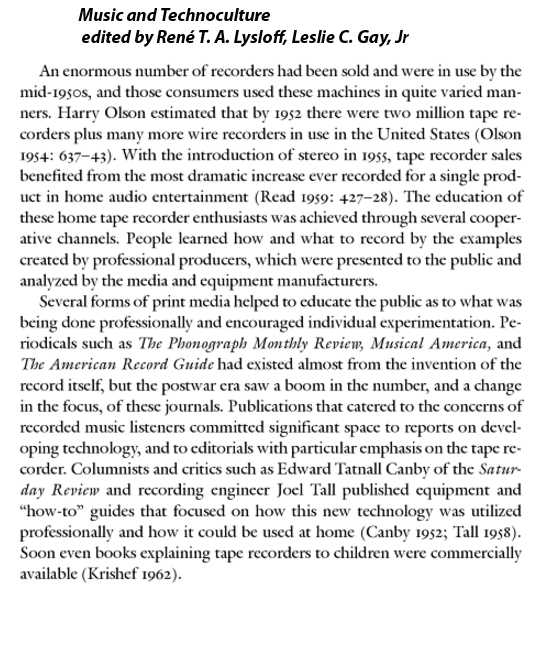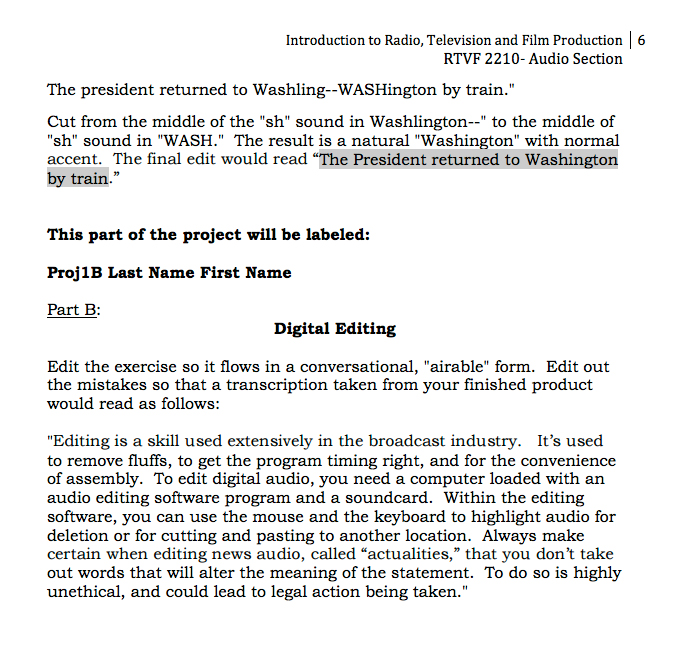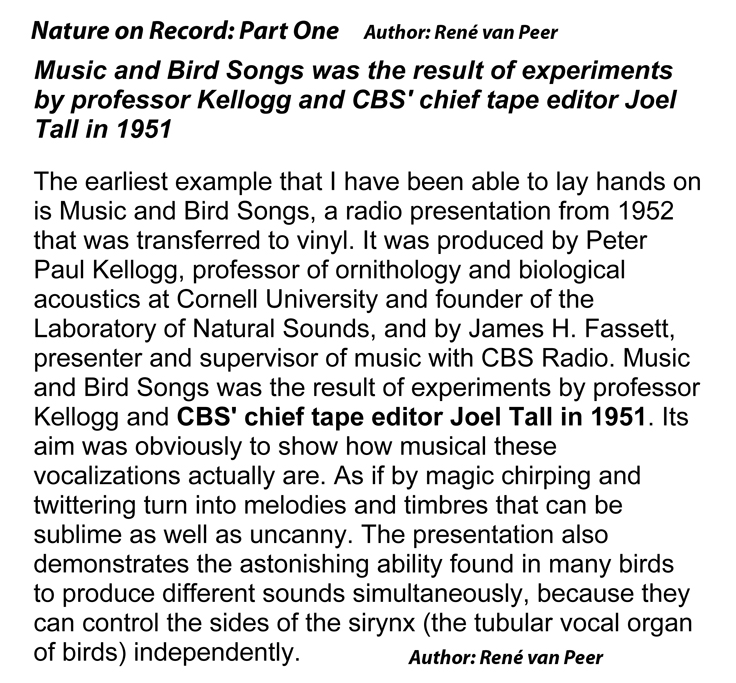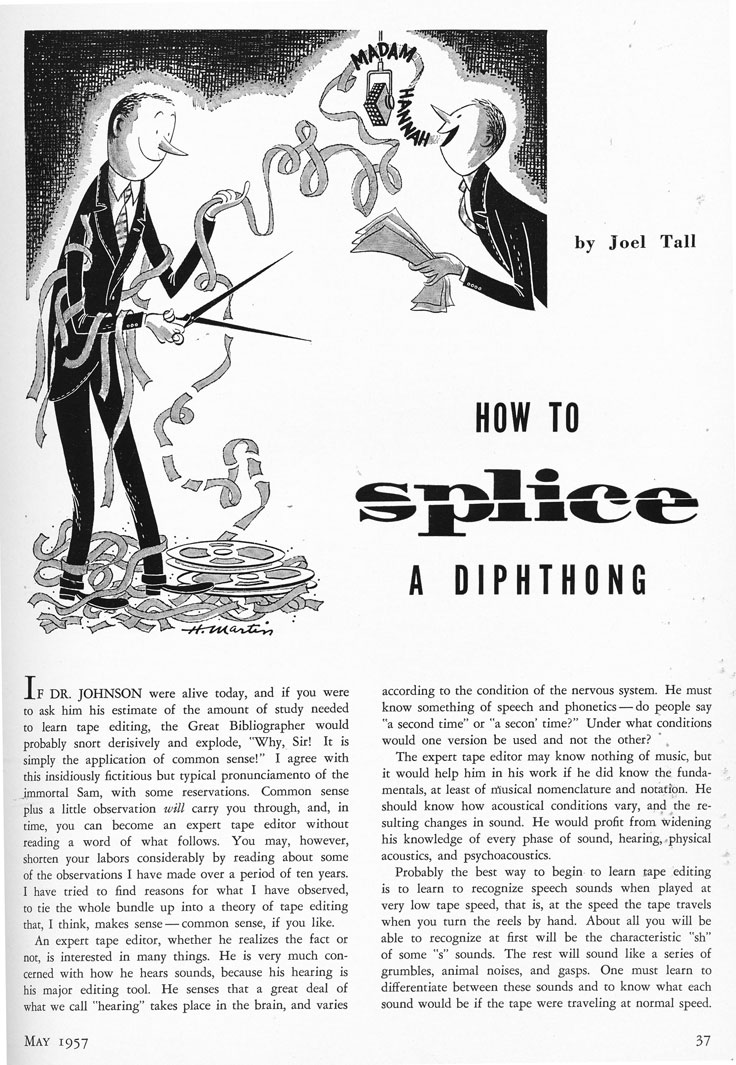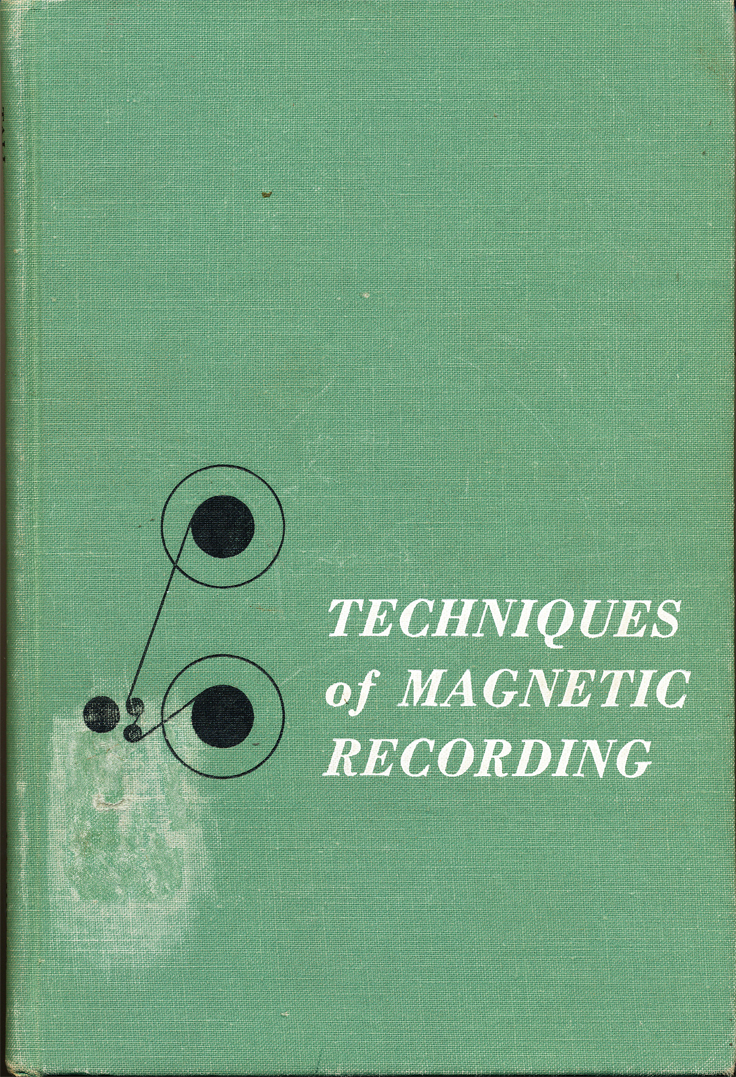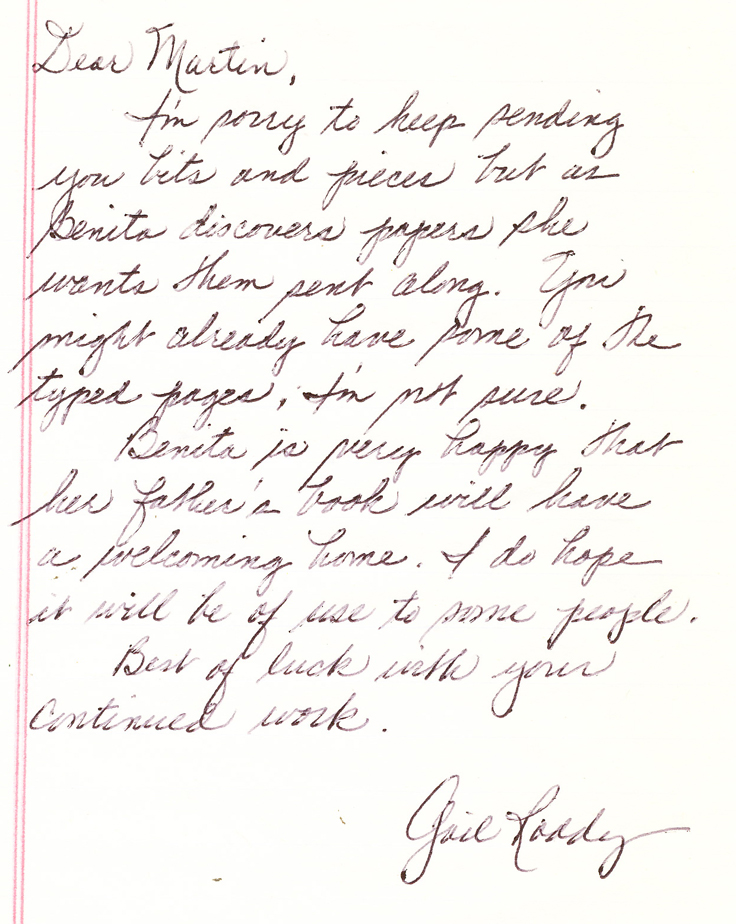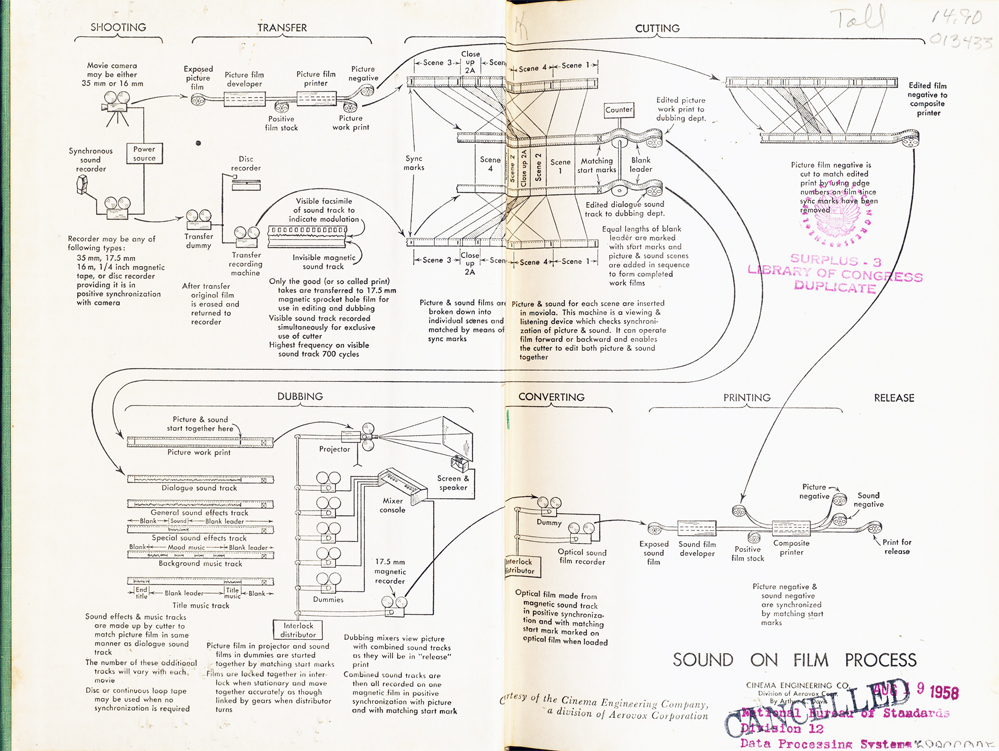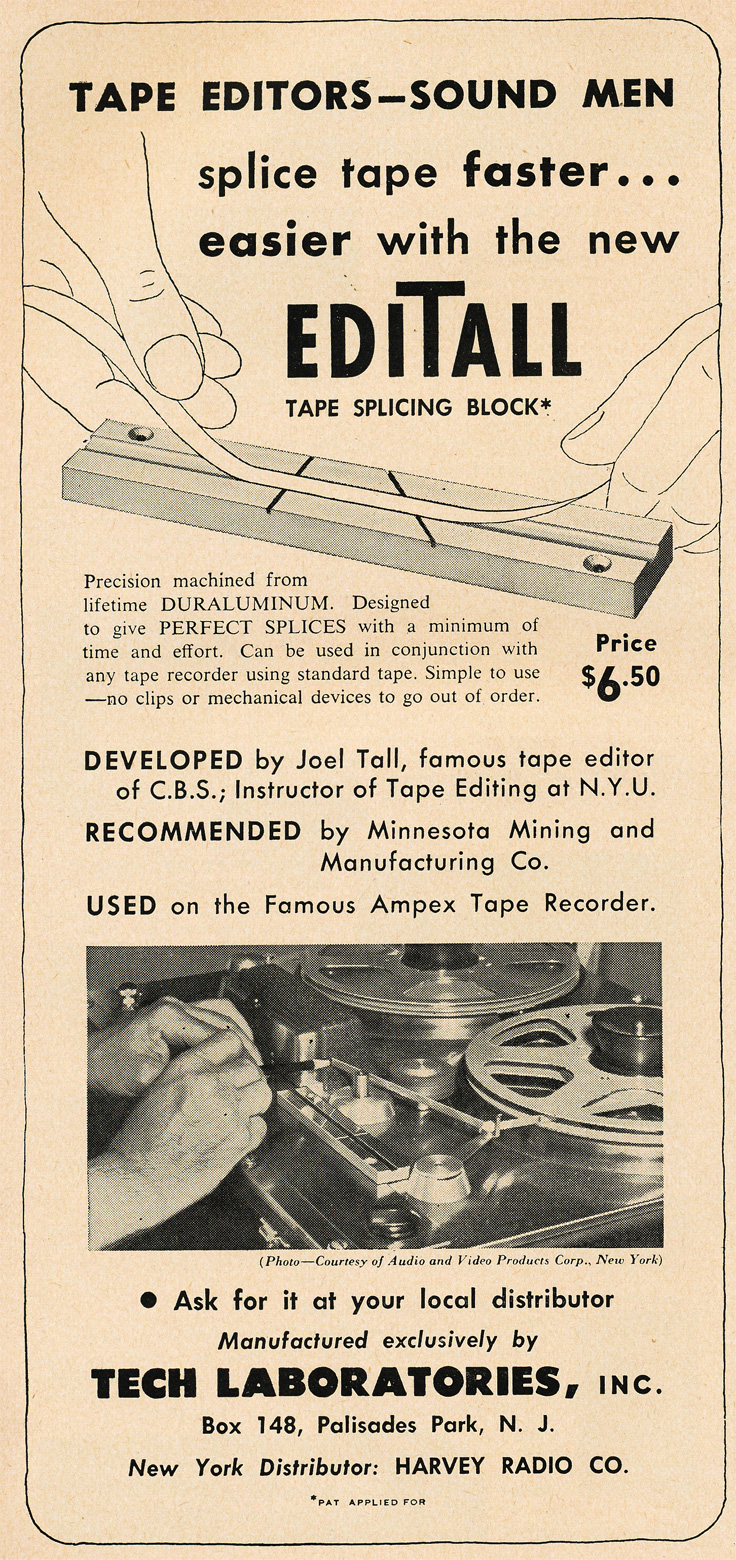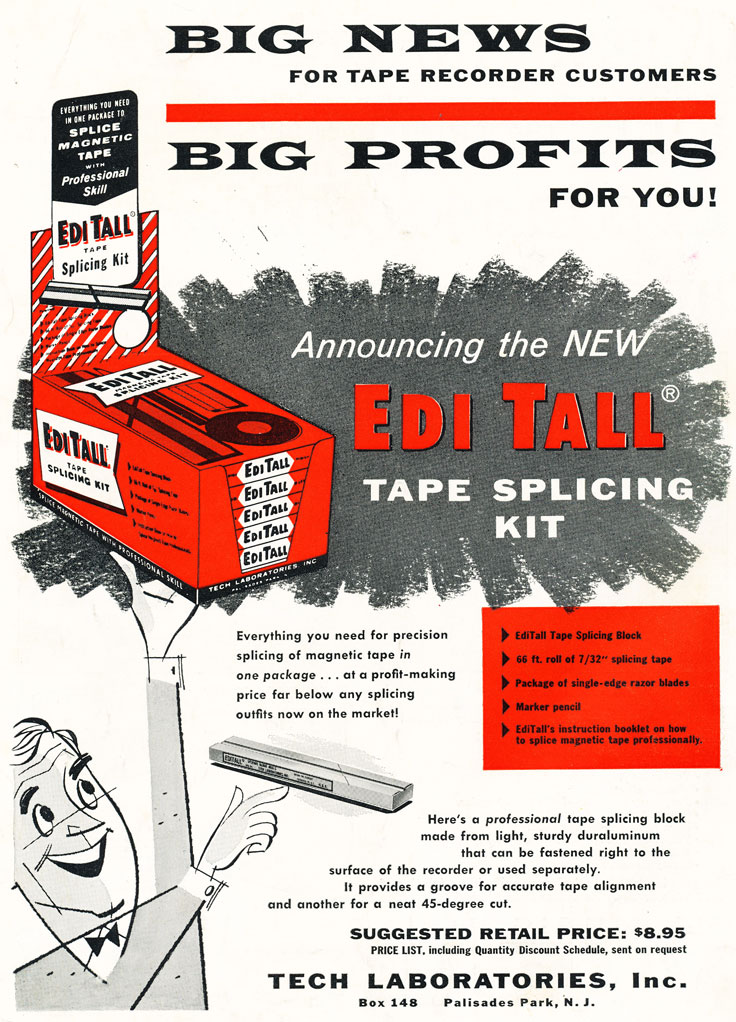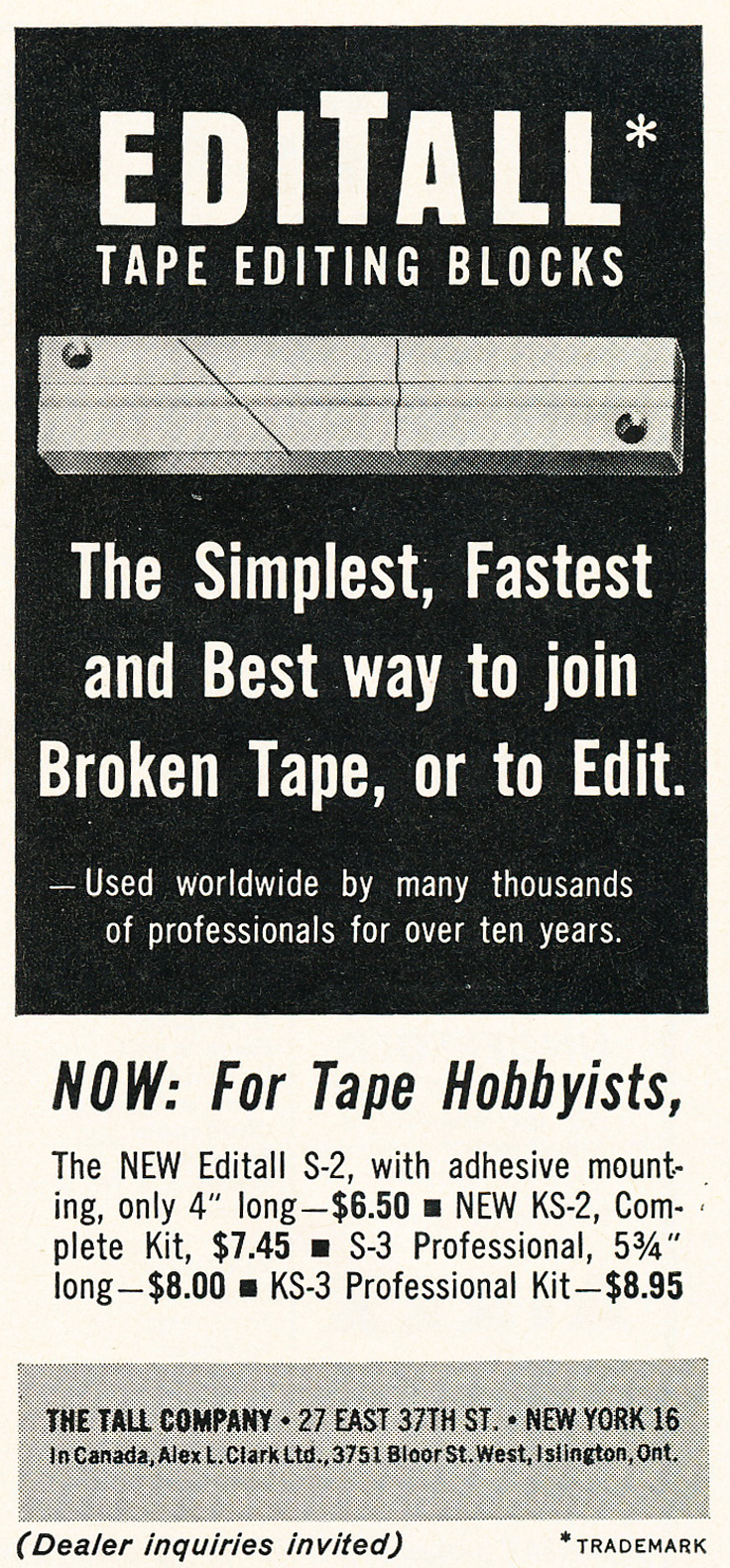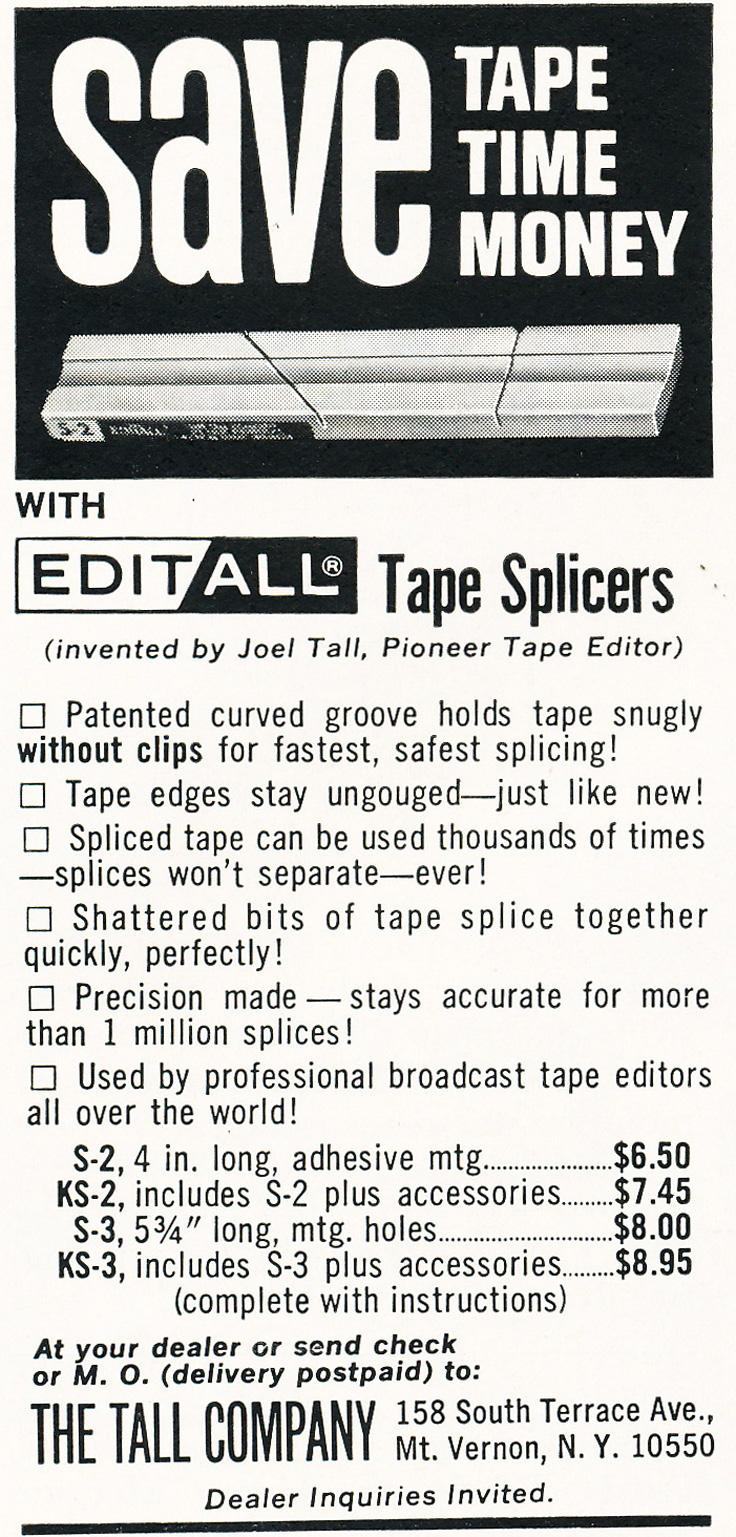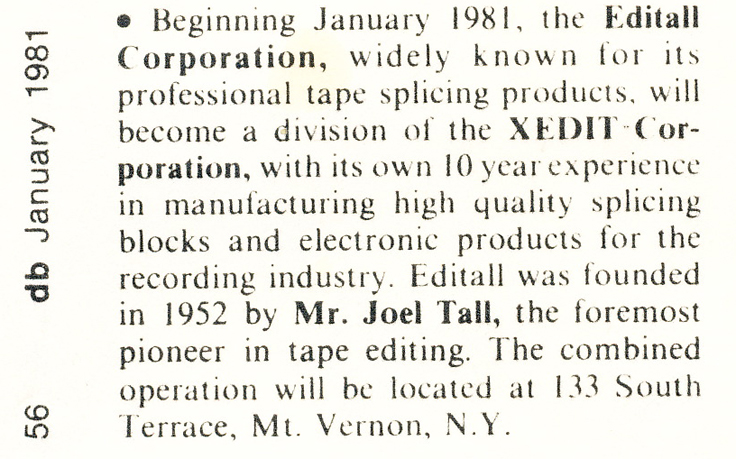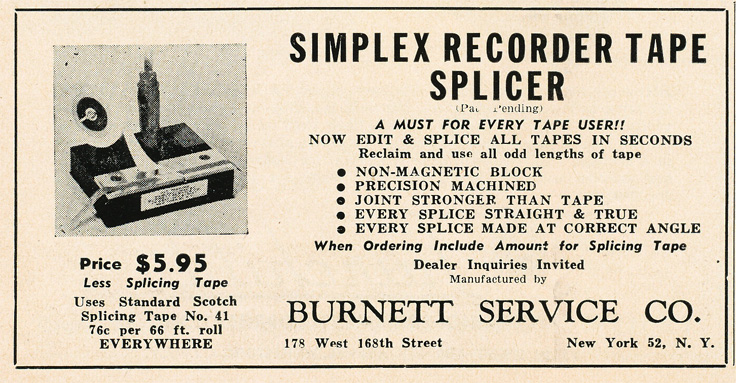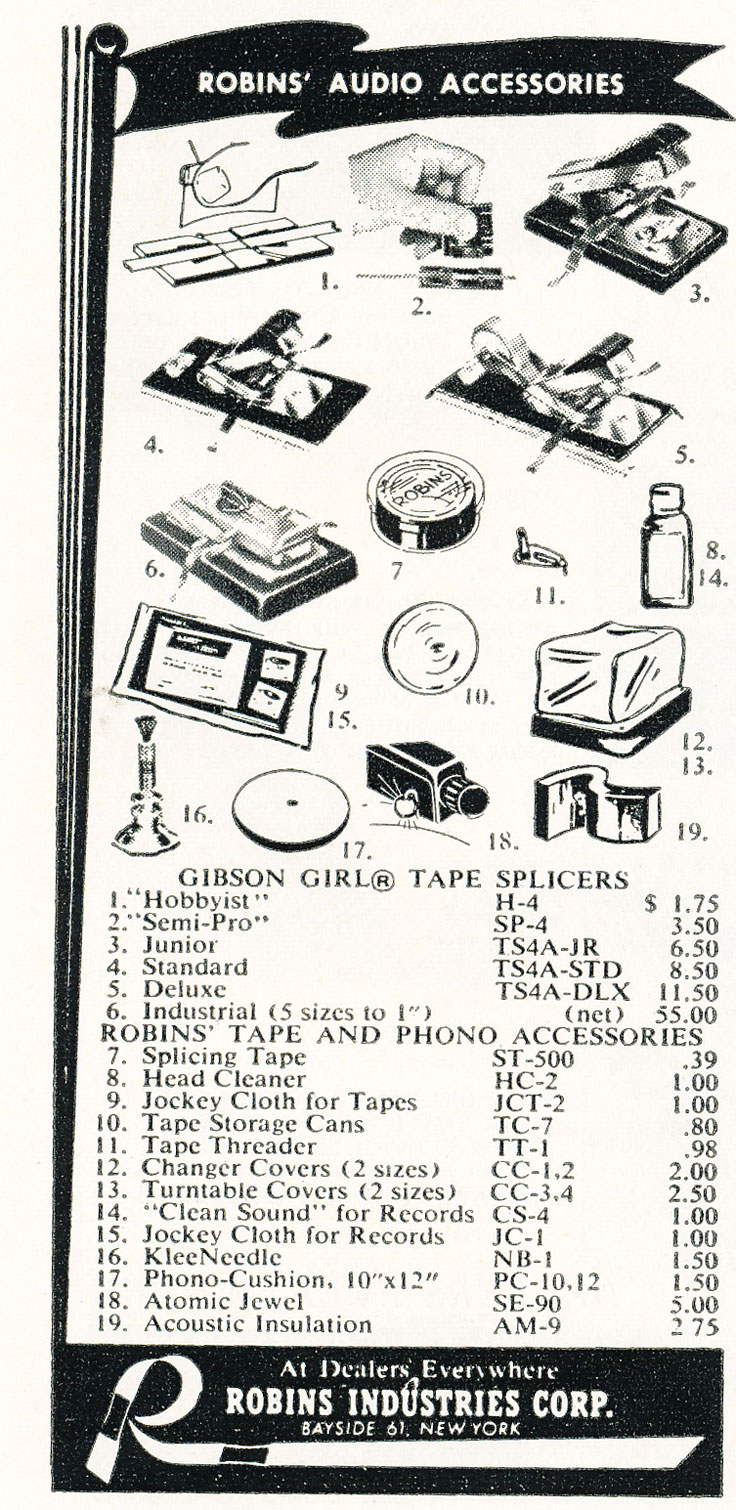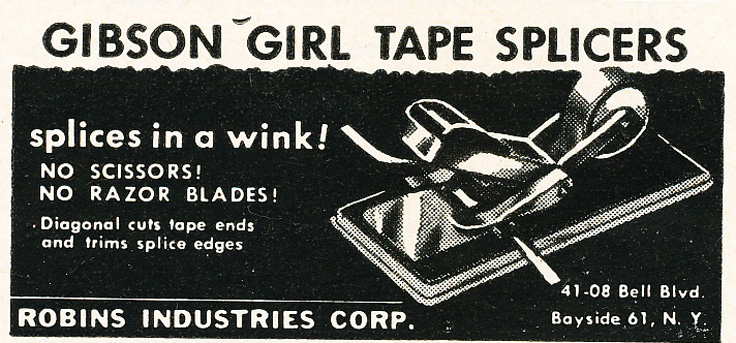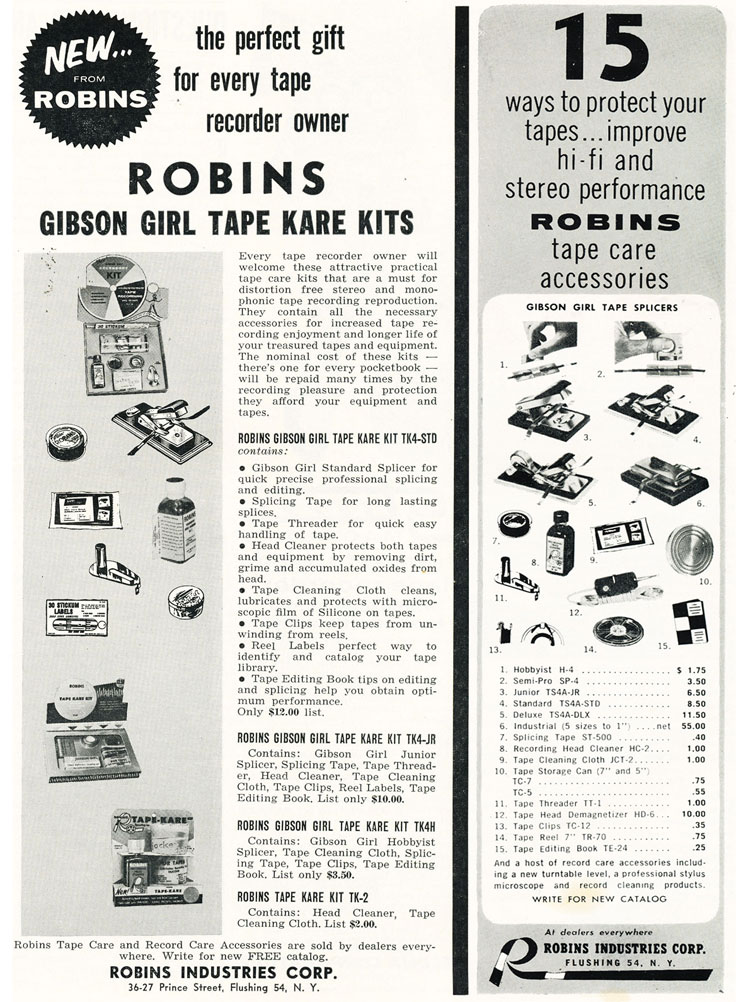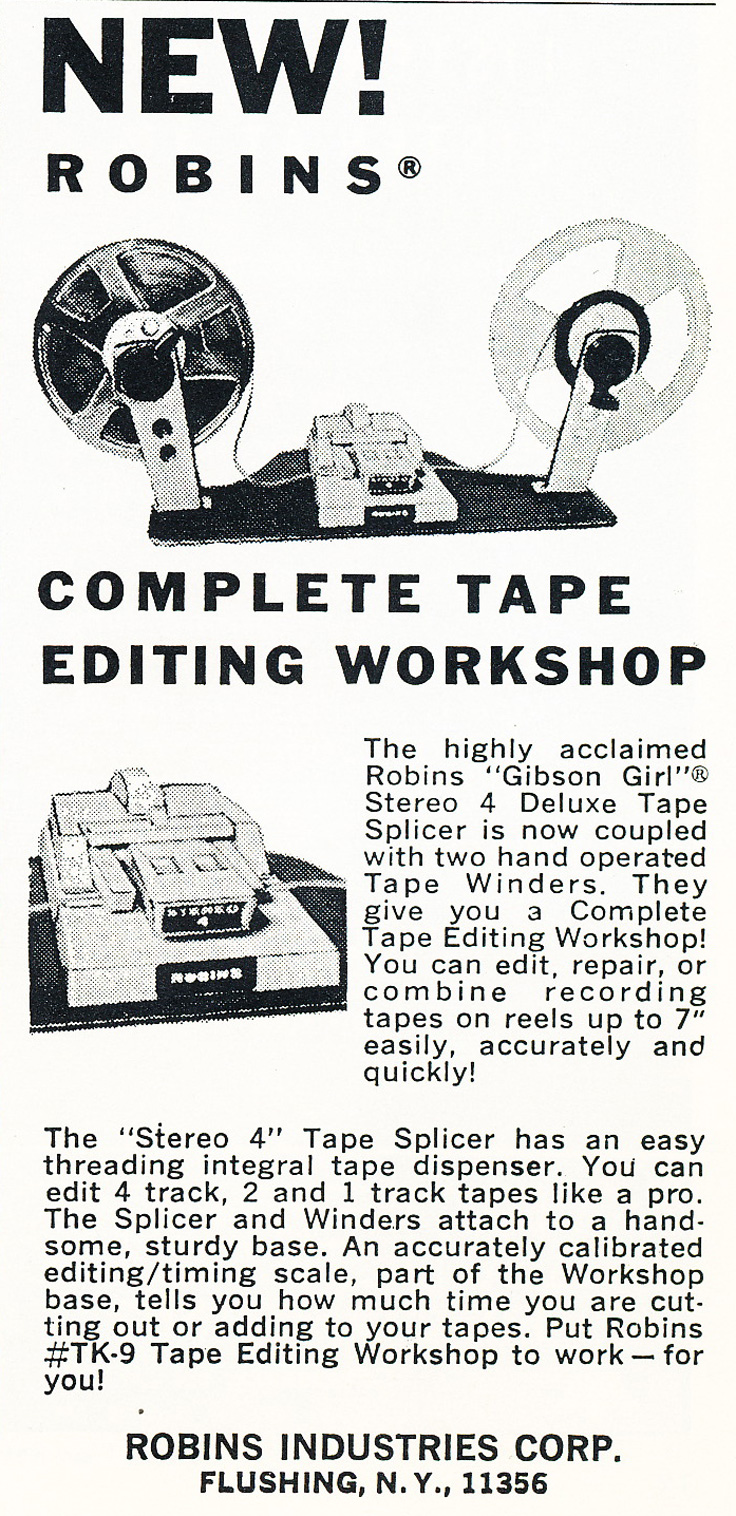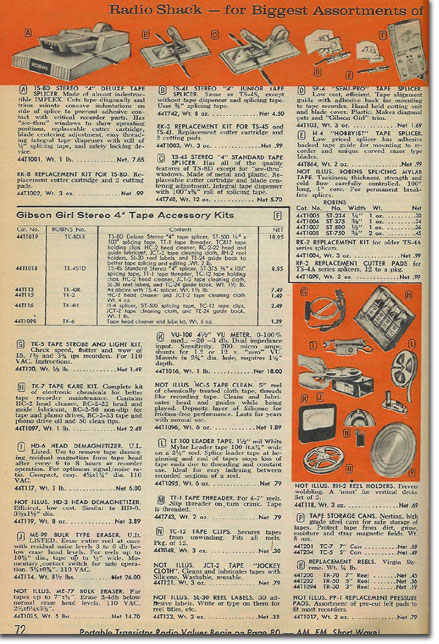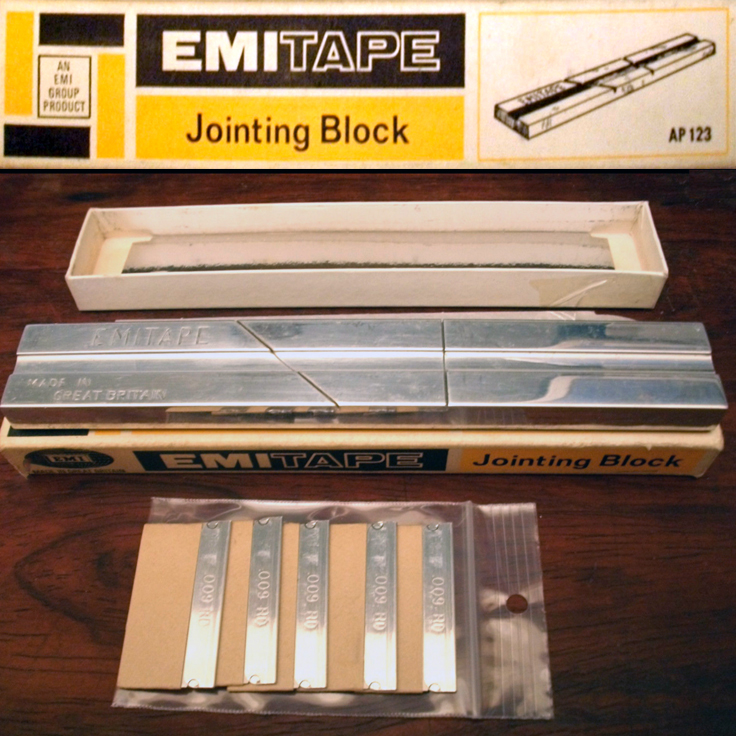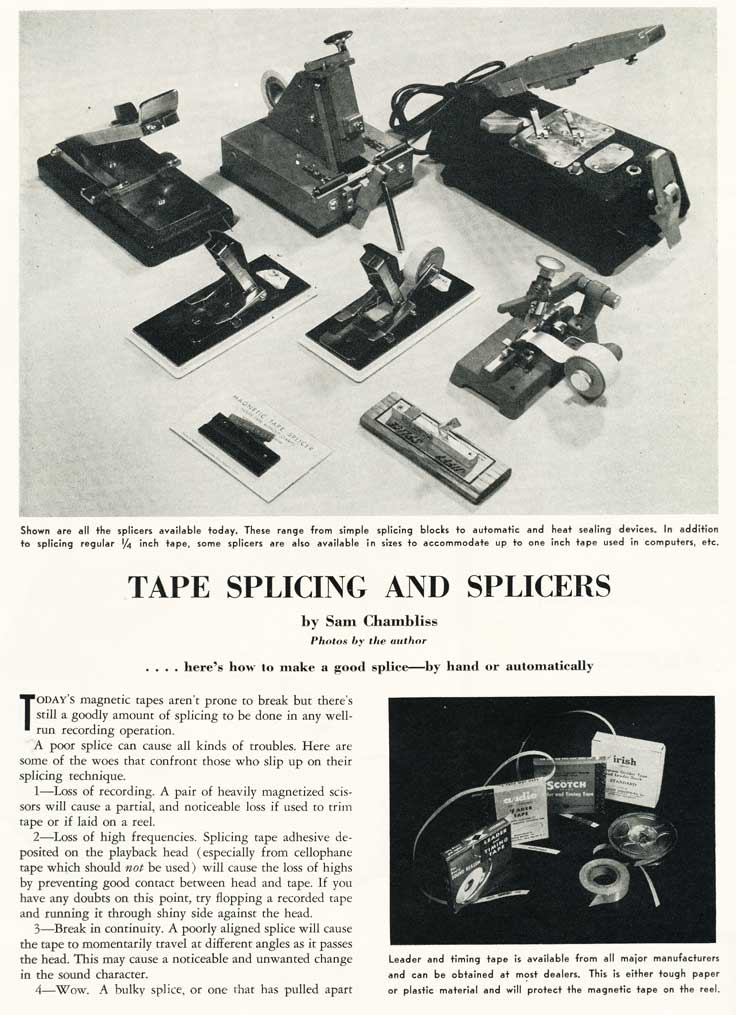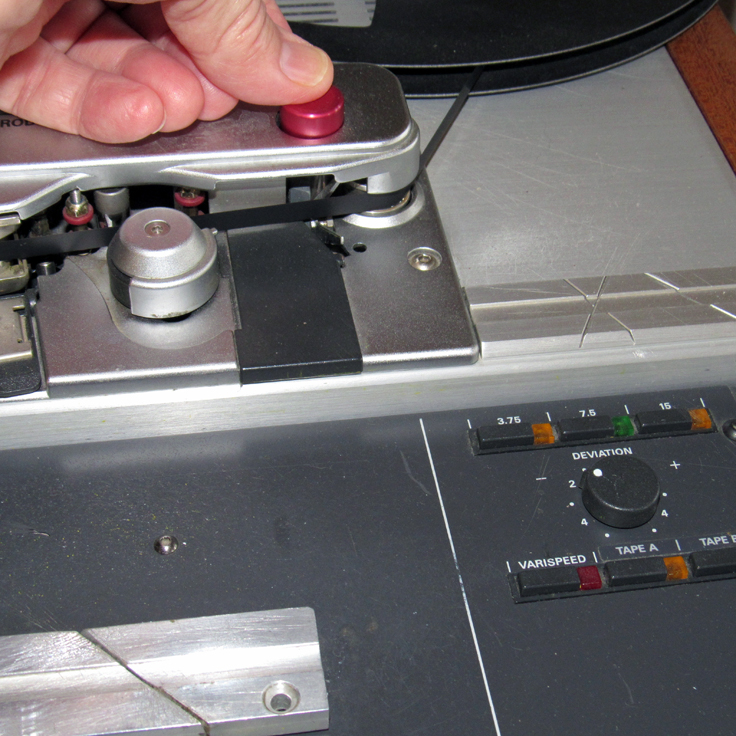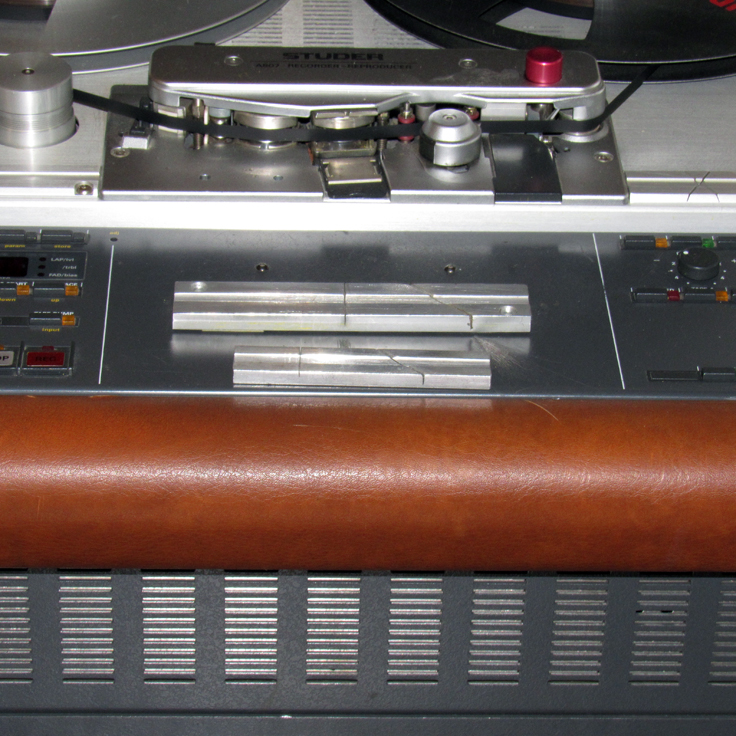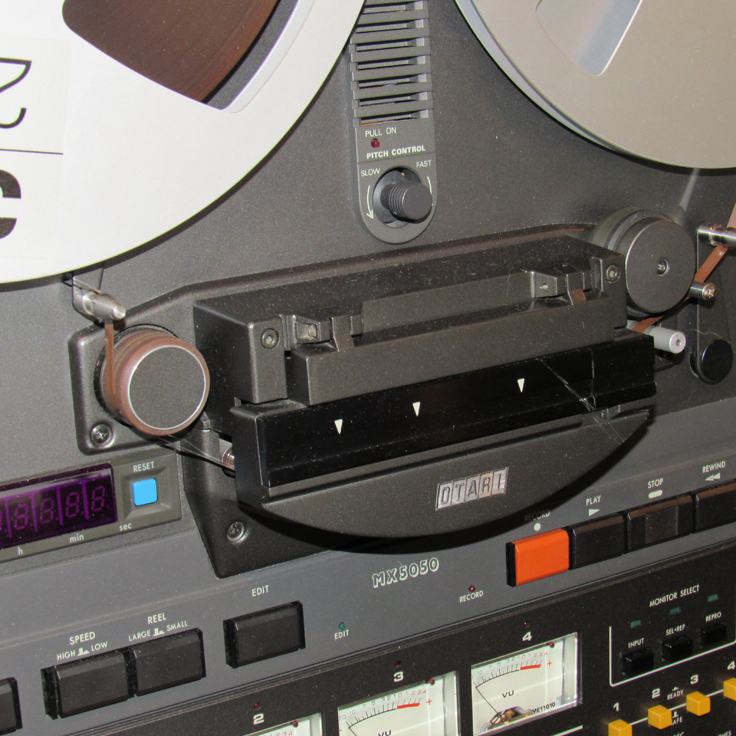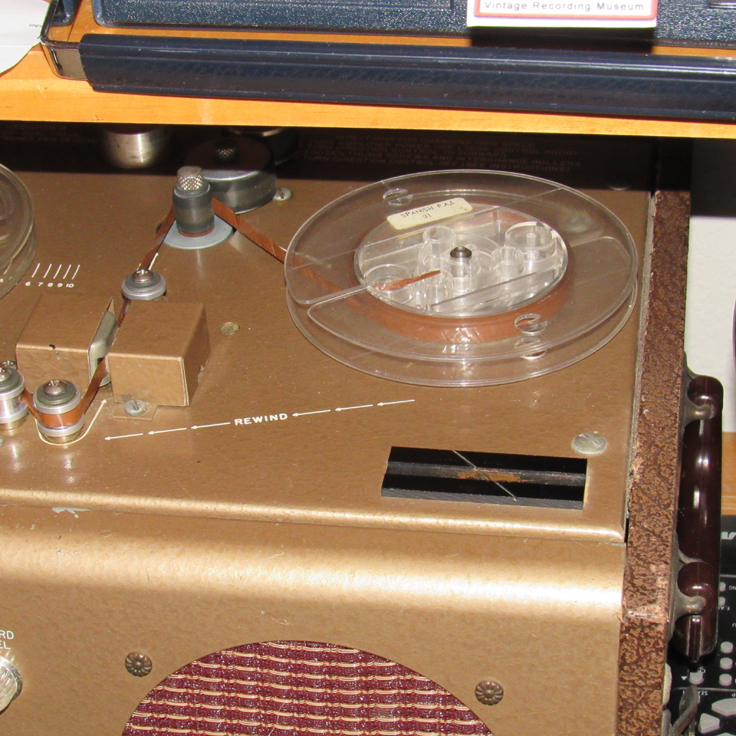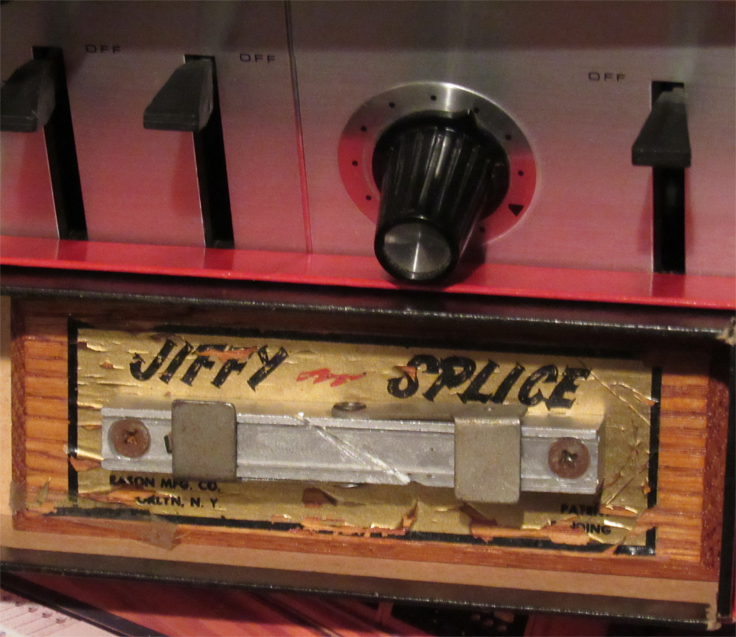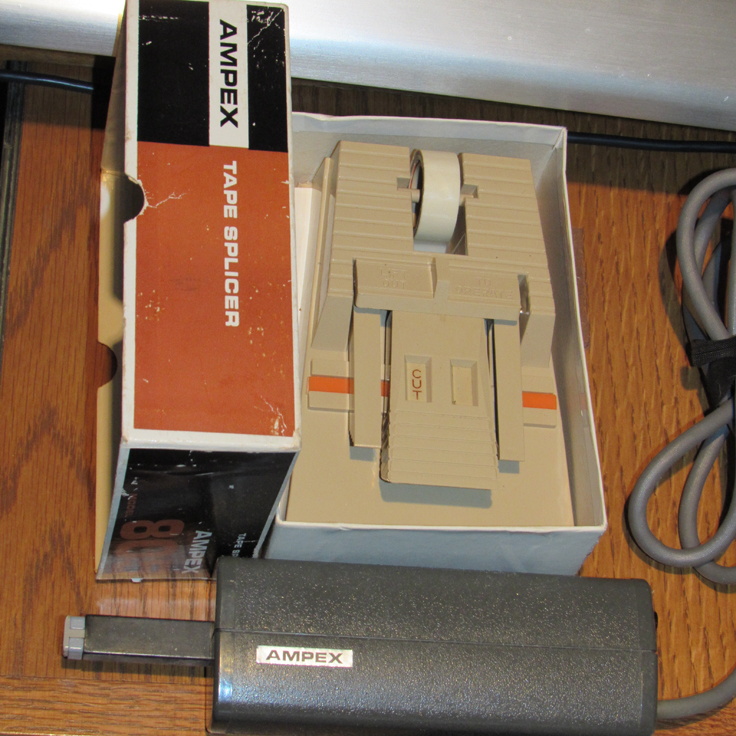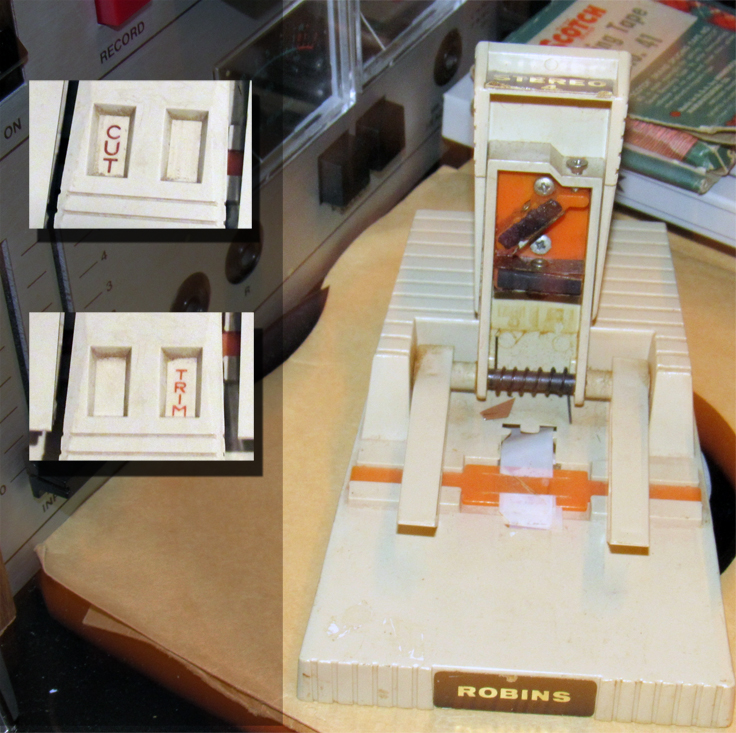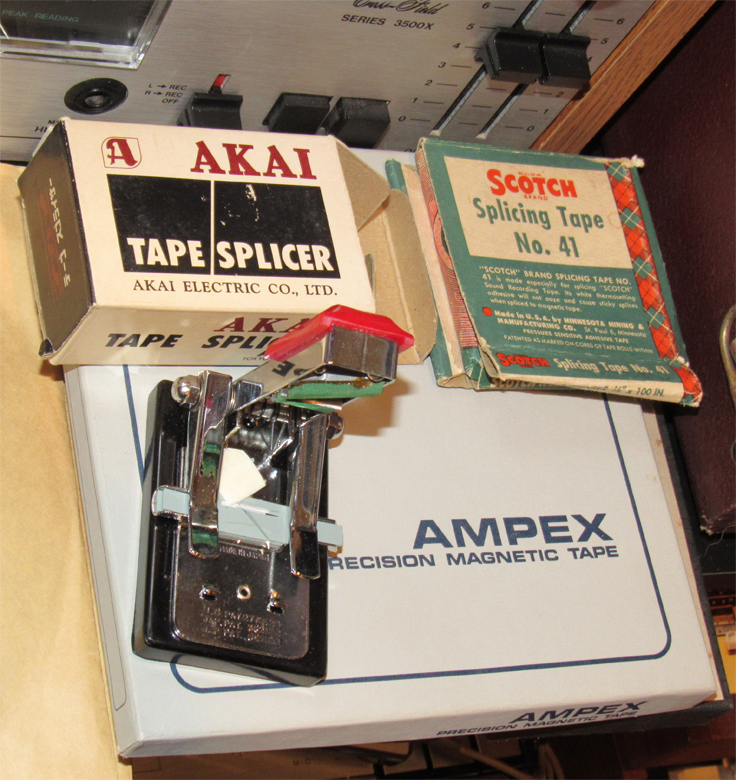
EDITall - Joel Tall
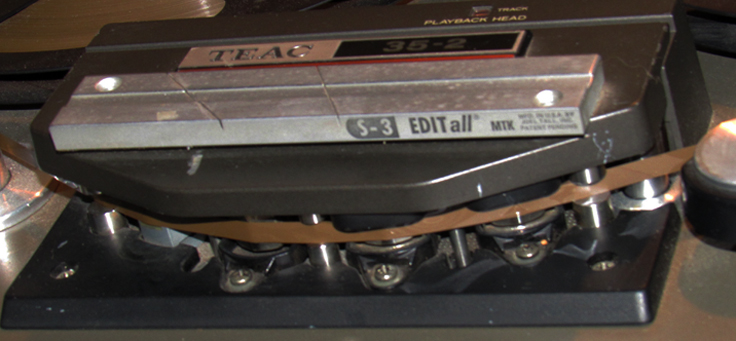
Interviews and Stories
Preserving the stories of significant individuals in sound recording generally and magnetic recording specifically is a major project of MOMSR. The Museum’s goal is to document the stories of those persons who contributed significant inventions, manufactured equipment and who engineered and produced audio recordings, especially in the areas of music, broadcast, film/video and science. These interviews will be available on MOMSR’s web site and in the permanent facility when it is created. These interviews have also been made available to the Audio Engineering Society (AES) and the National Academy of Recording Arts and Sciences (Grammy’s).
EdiTall - Joel Tall
Joel Tall was born on April 17, 1905 and passed away in December 1986. He was married to Leona B. Tall and was survived by one daughter Benita J. Kaplan. Leona helped Joel Tall found The Tall Company in the 1950's. Benita Kaplan has generously donated some of Joel Tall's personal papers and photos to our Museum of Magnetic Sound Recording. In 1950 Joel Tall filed U.S. Patent #US 2599667 A for his Splicing Block stating "This invention relates to splicing blocks, such as are used in splicing film and sound recording tape, and specifically it refers to a block which is particularly suitable for editing sound recording tape." View the full patent |
||
|
Joel Tall at CBS with Mr. Goldberg |
||
Click on the image to view the entire manual in pdf |
||
Article Sound With Images about Joel Tall
|
Draft of Joel Tall's article for db Magazine
|
Correspondence and certificates
|
Please note: Some of Joel Tall's documents are fairly lengthy, so allow some time for them to download! |
||
Letters of condolence
|
Joel Tall's notes for Stereophile #2 presentation October 2, 1962
|
Joel Tall's notes for Stereophile presentation January, 1963
|
Joel Tall - Taping News For Broadcast
|
Joel Tall - Audio Tape Editing In Radio News Broadcast - 1974
|
|
Books published Tape Editing Techniques of Magnetic Recording
|
||
|
||
|
Joel Tall article from the Reel2ReelTexas archives PDF |
||
Joel Tall's book "Techniques of Magnetic Recording" |
||
EDITall Ads from Reel2ReelTexas.com archives
reel to reel tape splicers also appeared in many configurations although most professional studios used the splicing block
|
EMI called theirs a "joining block"
1956 article on tape splicing - view pdf
Here are a couple of bits of information I can give you from first hand knowledge.
1) Joel was the audio tape editor of the famed Edward R. Murrow LP I CAN HEAR IT NOW. It was the first mass selling collection of historic audio sound clips. I do believe his name is on the album. Amazingly it is on sale at AMAZON.
2) He was also the editor of all the incoming feeds that were part of the CBS RADIO WORLD NEWS ROUNDUP at 8:00AM Eastern. I know because I was in the control room once when he did it (as a boy, of course!!!). He was especially tough on the correspondents when it came to their speech delivery and diction, and was known to tell them to redo a spot if it didn't sound right.
3) He helped record bird sounds for the Kellogg Institute at Cornell at one point. You are aware of their impressive work in magnetic sound recording, right? I'm sure they still have them. Here's the link:
4) His EdiTall editing block was THE standard in audio (and then video) tape editing until digital came along. You could find those blocks attached to every reel to reel editing machine in just about any studio in the world. I had engineers using them when I first did radio broadcasts in the 1960's. We had them in my American Forces Network, France studios in AFN-VERDUN when I was in the service.Dick Hubert (Joel Tall's nephew)
Stuart Gordon - article. I was told in the early years two inch tape was physically edited using a razor blade to cut and some adhesive to join the splice. Was this a bad dream or did anyone ever do -
Dick Hubert- Yes, Stuart, I personally did this with a tape editor for the ABC Evening News in 1964 on the day the Pope visited Manhattan. I was in charge of building a "reprise" from the day's live coverage and we would record a bit, then select a couple of scenes, editing them on to the master reel, etc. We used an Edi-Tall editing block that was specially engineered for the two inch reel to reels. It was a version of the same Edi-Tall that was used everywhere there was magnetic tape AUDIO editing. I know all of this because my uncle, Joel Tall, a veteran CBS Radio News engineer, invented the Edi-Tall. I specifically remember my calling him afterwards to compliment him on how well the Edi-Tall worked and how we could not have done the video edit job then without it.
Ted David Dick-great anecdote!!
Stuart Gordon -Thanks for shedding some light on this. I was vacation relief in 1979 and the group 6 in the tape area, Frank Vaneman , told me this story and I don't think I ever believed him. Chalked it up as some new guy/rookie jive.
12/1/2015 - Dick Hubert (Joel Tall's nephew )
Reel to reel tape splicers in the Museum's Reel2ReelTexas collection
| EDITall on the Museum's Teac Tascam 35-2 |
||
|
||
Thank you for viewing our site! We hope you have found our information helpful and interesting.
Tour our collection!
We offer seven hours of 50 video segments via download about our reel to reel tape recorder and microphone collection and the history of magnetic recording available at this link.
ORDER THE VIDEO FILES ON LINE - was
14.95NOW only $9.95
There are 50 QuickTime H264 854 X 480 files in this download. Play on MAC OS or Windows Media Player
While most content deals with the history and manufacturers of the reel to reel tape recorder, or tape deck, we cover many aspects of magnetic recording.
We provide 48 hours during which to download the files. After that the file access will expire. Once the files are downloaded they are yours to keep.
© 2018 Museum of Magnetic Sound Recording • Webmaster • All pictures and content on this web site are the property of the Theophilus family,the Museum of Magnetic Sound Recording and reel2reeltexas.com • Photos of items in our collection are available for sale. We do NOT provide copies of ads, nor photos from other sources! All photo work is billed at studio rates and a deposit is required.
